Discover the secret to the perfect vanilla cake with our easy-to-follow recipe. Light, fluffy, and full of flavor—learn how to make a cake that’s sure to impress! Ideal for any occasion or a sweet treat just because.
Have you ever wondered why a simple vanilla cake can be so irresistible? It’s not just because of the sweet flavor—it’s the soft, fluffy texture and the comforting, familiar taste that makes it everyone’s favorite! Whether you’re baking for a birthday, a holiday, or just because you love cake, this vanilla cake recipe is your go-to. But what makes it so special?
Imagine cutting into a cake that’s perfectly moist and light, then taking a bite and being greeted with that rich vanilla flavor. Yummy, right? The best part is that you don’t need to be a pro to make it! In fact, making a vanilla cake from scratch is easier than you think.
Do you know what goes into making a vanilla cake so perfectly fluffy? It’s all about the right combination of ingredients, and a little love while you bake. From choosing the best vanilla extract to making sure your cake rises just right, we’ll walk you through every step.
Ready to make a cake that will have everyone asking for seconds? Let’s get started! But before we dive into the recipe, you might be wondering: What ingredients do I need, and how can I make sure my cake comes out light and moist every time?
Don’t worry—we’ve got you covered! From selecting the right ingredients to making sure your cake bakes evenly, we’ll share all the tips and tricks you need. You’ll even learn some fun ways to decorate your cake, so it looks as good as it tastes.
Looking for more baking inspiration? Check out Epicurious for expert tips and delicious recipes that will take your cake-making skills to the next level.
Let’s get ready to bake a vanilla cake that everyone will rave about!
1. Understanding the Basics of Vanilla Cake
When you think of cake, what comes to mind? For many people, vanilla cake is the ultimate classic—a cake so delicious and comforting that it’s hard to resist a second slice. But what makes vanilla cake so special? Let’s break it down!
What Makes Vanilla Cake So Special?
Vanilla cake is beloved for its simplicity. It doesn’t have the strong flavors of chocolate or the complex spices of carrot cake, but that’s exactly why it’s so popular. It’s light, soft, and perfectly sweet. The subtle flavor of vanilla creates a delicate balance that makes it a perfect base for many types of frosting, fillings, and decorations.
But there’s more to it than just vanilla. When made correctly, a vanilla cake can be light and airy, with just the right amount of moisture. Achieving that texture is all about getting the ratios and techniques right. Whether you’re making it for a special occasion or just to satisfy your cake cravings, knowing the basics of vanilla cake helps ensure that every bite is perfect.
The Role of Key Ingredients in a Vanilla Cake
Now, let’s talk about the ingredients that make this cake magic. You probably already have most of these in your kitchen!
- Flour: The foundation of the cake. It gives the structure and texture. All-purpose flour works well for a light and fluffy cake.
- Sugar: Sweetens the cake and helps it brown beautifully in the oven.
- Butter: Adds moisture and richness, making the cake soft and flavorful.
- Eggs: Bind everything together while adding moisture. They also help the cake rise.
- Baking Powder: This is the rising agent that makes the cake light and fluffy. Without it, your cake might end up flat and dense.
- Vanilla Extract: The star ingredient! It adds the signature flavor that makes vanilla cake so irresistible.
When you mix these ingredients in the right proportions and use the right techniques, you’ll be well on your way to baking a perfect vanilla cake.
How to Choose the Right Vanilla for the Best Flavor
Now, here’s a little secret: Not all vanilla is created equal! You might think vanilla is just vanilla, but there are different types. Pure vanilla extract is made from vanilla beans and has a rich, deep flavor. On the other hand, imitation vanilla extract is made from synthetic flavors and tends to taste a bit flat.
If you want your cake to taste amazing, always go for pure vanilla extract. It might cost a little more, but the flavor is worth it. If you want an extra-special touch, you can even use vanilla bean paste or scrape the seeds from a real vanilla bean. This gives the cake a speckled, gourmet look and a deep, aromatic flavor.
For more tips on choosing the right ingredients, check out Epicurious, a trusted resource for culinary advice from experts.
2. Essential Ingredients for a Perfect Vanilla Cake
Let’s dive into what makes a vanilla cake truly special! When it comes to baking, ingredients play a HUGE role in ensuring your cake turns out moist, fluffy, and packed with flavor. So, which ingredients are essential for the perfect vanilla cake? Let’s explore each one and why it matters.
The Core Ingredients: Flour, Sugar, Butter, and Eggs
These four ingredients are the backbone of any great vanilla cake. Without them, it wouldn’t be the cake we all know and love! Let’s take a closer look at each one:
- Flour: Flour is what gives the cake structure. It helps it rise and holds everything together. Most recipes call for all-purpose flour, which strikes a balance between softness and sturdiness.
- Sugar: Sugar doesn’t just sweeten the cake; it also plays a key role in the texture. It helps the cake stay moist and gives it that beautiful golden color as it bakes.
- Butter: Butter is responsible for making your cake soft, tender, and rich. The fat from butter adds moisture and helps the cake rise. It’s essential for that melt-in-your-mouth texture.
- Eggs: Eggs act like glue in the cake, holding everything together. They also help the cake rise and provide moisture. For the best texture, always use room-temperature eggs!
Why Quality Vanilla Extract Matters
You might be thinking, “Why does the type of vanilla matter?” Well, it does! Vanilla extract is the soul of your cake’s flavor. You can go for imitation vanilla, but that’s not going to give you the rich, sweet aroma that real vanilla does.
- Pure Vanilla Extract: Made from real vanilla beans, this extract is rich in flavor and perfect for any cake. It’s a bit pricier, but it’s totally worth it.
- Vanilla Bean Paste: This is a thick version of vanilla extract with the seeds from the bean itself. It provides a strong vanilla flavor and makes your cake look extra fancy with little vanilla specks throughout.
- Vanilla Beans: If you’re feeling fancy, you can scrape the seeds from a real vanilla pod. It’s a fun way to elevate your cake and adds a more intense vanilla flavor.
Choosing high-quality vanilla really makes a difference in how your cake tastes, so don’t skimp here!
Adding Extras: Milk, Baking Powder, and Salt
Now let’s talk about a few more ingredients that make all the difference in texture and flavor.
- Milk: Milk adds moisture to the batter and helps dissolve the sugar. It also makes the cake softer. You can use whole milk, almond milk, or any other type of milk you prefer, but avoid skim milk as it lacks the richness that helps with texture.
- Baking Powder: This is the secret ingredient that helps your cake rise and become light and fluffy. Baking powder contains both an acid and an alkali, which react when wet to create bubbles and lift the cake. Make sure your baking powder is fresh, as it loses its effectiveness over time.
- Salt: Salt may seem like a small addition, but it’s crucial! A pinch of salt balances the sweetness and enhances the other flavors in your cake. It might seem like an odd addition, but trust us, it’s necessary!
Baking Tip: The Importance of Fresh Ingredients
The freshness of your ingredients is key to making a successful vanilla cake. Stale flour, expired baking powder, or old butter can lead to a cake that doesn’t rise properly or lacks flavor. Always check the expiration dates on your ingredients and try to use them within a reasonable time frame for the best results!
For more tips on ingredients and how they affect your baking, check out resources like BBC Good Food. They offer excellent advice on ingredients, substitutions, and baking techniques that will make you a pro in the kitchen.
3. Step-by-Step Instructions for Making Vanilla Cake
Now that we’ve covered the ingredients, it’s time to dive into the fun part: baking the cake! Don’t worry; making a delicious vanilla cake is easier than you think. With these simple step-by-step instructions, you’ll be able to create a moist, fluffy, and irresistible cake that everyone will love. Ready to bake?
Preparing Your Pans and Preheating the Oven
The first thing you need to do is prepare your baking pans and preheat your oven. This ensures your cake bakes evenly and doesn’t stick to the pan.
- Grease the Pans: Lightly grease two 8-inch round cake pans with butter or oil. Then, lightly dust them with flour. If you prefer, you can also use parchment paper to line the bottom of the pans to make removing the cakes easier.
- Preheat the Oven: Preheat your oven to 350°F (175°C). This temperature ensures your cake will bake evenly without drying out.
Mixing the Wet and Dry Ingredients for a Smooth Batter
The secret to a light and fluffy vanilla cake lies in how you mix the wet and dry ingredients. Let’s break it down!
- Cream the Butter and Sugar: In a large bowl, beat the softened butter and sugar together until they are light and fluffy. This usually takes about 3-4 minutes with an electric mixer on medium speed. This step incorporates air into the batter, making your cake rise beautifully.
- Add the Eggs and Vanilla: Next, add the eggs one at a time, mixing well after each addition. Then, add the vanilla extract. Beat everything together until the mixture is smooth and creamy.
- Alternate Adding Dry Ingredients and Milk: In a separate bowl, whisk together the flour, baking powder, and salt. Add this dry mixture to the butter mixture in three parts, alternating with the milk. Start and finish with the dry ingredients. Mix until just combined—don’t overmix, as this can make the cake dense.
- Check the Consistency: The batter should be smooth and pourable. If it’s too thick, you can add a tablespoon of milk to loosen it up.
Baking the Cake: Tips for Even Rising and Moistness
Now, it’s time to bake your cake! Here’s how to ensure it rises evenly and stays moist:
- Divide the Batter Evenly: Split the batter equally between the two prepared pans. Use a spatula to smooth the top and make sure the batter is level in each pan.
- Bake the Cake: Place the pans in the preheated oven and bake for 25-30 minutes. Check for doneness by inserting a toothpick into the center of the cake. If it comes out clean or with just a few crumbs, your cake is done!
- Cool the Cake: Once your cakes are done, remove them from the oven and let them cool in the pans for about 10 minutes. Then, turn the cakes out onto a wire rack to cool completely before frosting.
How to Test for Doneness
This step is crucial—no one likes a raw cake! To check for doneness:
- Gently press the center of the cake with your finger. If it bounces back, it’s ready.
- You can also use the toothpick method: Insert a toothpick into the center of the cake, and if it comes out clean (with no batter sticking to it), your cake is perfectly baked.
By following these steps, you’ll have a perfectly baked, soft, and moist vanilla cake ready for frosting and decorating.
For more tips and detailed baking instructions, visit King Arthur Baking, a trusted resource for bakers of all levels.
4. Tips for a Moist and Fluffy Vanilla Cake
We’ve all had the unfortunate experience of biting into a dry cake, right? It’s such a bummer when all that effort doesn’t pay off with the perfect texture. But don’t worry! With these expert tips, you can make sure your vanilla cake comes out moist, fluffy, and absolutely delicious every time.
The Secret to Light, Airy Texture
Want your cake to be light and airy, like the kind you find in bakery windows? Here’s the secret:
- Cream the Butter and Sugar Well: The first step to achieving a light texture is creaming the butter and sugar until they are light and fluffy. This process incorporates air into the batter, which will help the cake rise and create that soft, airy texture. Don’t rush this step—it should take 3-4 minutes of mixing with an electric mixer on medium speed.
- Don’t Overmix: When you’re adding the flour mixture and milk, it’s super important to mix the batter until it’s just combined. Overmixing can cause the cake to become dense because it activates the gluten in the flour too much. So, mix gently and stop when everything is incorporated.
- Use Room Temperature Ingredients: Room temperature butter, eggs, and milk are your best friends. They mix together more easily, creating a smoother batter and helping to create that fluffy texture. If you forget to take your butter or eggs out ahead of time, you can place the butter in the microwave for a few seconds to soften it or place the eggs in a bowl of warm water for about 10 minutes.
How to Avoid a Dry Cake
No one likes a dry vanilla cake, right? To keep your cake moist, here are a few tips:
- Don’t Overbake: One of the most common causes of dry cake is overbaking. Make sure to check the cake at the 25-minute mark. Ovens vary, so it’s a good idea to start checking early and keep an eye on the cake after 20 minutes. If the edges of the cake start pulling away from the pan or if a toothpick inserted comes out clean, it’s time to take the cake out.
- Add a Simple Syrup: If you’re worried your cake might be a little dry, a quick and easy fix is to brush a little simple syrup (a mix of equal parts sugar and water boiled together) over the cake layers once they’re baked and cooled slightly. This helps lock in moisture.
- Use Cake Flour: If you want an even softer, more tender texture, consider using cake flour instead of all-purpose flour. Cake flour has a lower protein content, which means less gluten development and a finer crumb, resulting in a lighter and fluffier cake.
Importance of Proper Mixing and Baking Time
Perfect vanilla cake isn’t just about ingredients—it’s about how you handle them!
- Mix Properly: Mix the wet ingredients together before adding the dry ingredients, and always alternate between wet and dry when combining them. This ensures the right consistency and avoids lumps in your batter.
- Baking Time Matters: Keeping an eye on your cake as it bakes is crucial! Even a few extra minutes can dry out your cake. Make sure to test the cake by pressing the center with your finger or using a toothpick. It should bounce back or come out clean, indicating the cake is ready.
If you’re looking for more tips on getting your cakes just right, check out Bon Appétit, a trusted food resource for bakers of all experience levels. They’ve got tons of tips for achieving the perfect cake texture every time.
5. Decorating Your Vanilla Cake: Ideas and Inspiration
Now that you’ve made a perfectly fluffy vanilla cake, it’s time to make it look as amazing as it tastes! Decorating your cake is a fun part of the process, and it’s a chance to get creative. Whether you’re preparing for a special celebration or just want to impress your family with a beautiful dessert, here are some easy and beautiful decorating ideas.
Classic Buttercream Frosting: Simple and Sweet
The go-to frosting for most cakes is buttercream frosting. It’s rich, creamy, and easy to work with. Here’s how to make it:
- Ingredients for Buttercream Frosting:
- 1 cup (2 sticks) unsalted butter, softened
- 4 cups powdered sugar
- 2 teaspoons vanilla extract
- 2-4 tablespoons heavy cream or milk
- Pinch of salt
- Instructions:
- Beat the softened butter in a large bowl until creamy and smooth.
- Gradually add the powdered sugar, 1 cup at a time, and continue mixing.
- Add the vanilla extract, salt, and 2 tablespoons of heavy cream. Mix until the frosting is light and fluffy. If the frosting is too thick, add more cream a little at a time until you reach the desired consistency.
- Spread the buttercream over your cooled cake with an offset spatula for smooth, even coverage.
Creative Decoration Ideas
Once you’ve frosted your cake, it’s time to decorate! Here are a few ideas to get you started:
- Sprinkles or Edible Glitter: For a fun, colorful touch, you can sprinkle your cake with rainbow sprinkles, edible glitter, or colored sugar.
- Fresh Fruits: Add a fresh, light touch by decorating the cake with sliced fruits like strawberries, blueberries, or raspberries. You can also use fruits like citrus slices or kiwi for a vibrant pop of color.
- Chocolate Shavings or Chips: If you want a more decadent look, top the cake with chocolate shavings or mini chocolate chips. You can even drizzle some melted chocolate over the top for an extra touch of luxury.
- Flowers: Fresh edible flowers like pansies, roses, or lavender can be placed on top of your cake for a beautiful, garden-inspired look.
Using Fondant for a Sleek Finish
If you’re aiming for a more professional-looking finish, you can use fondant. It’s a smooth, elastic icing that can be rolled out and draped over your cake for a polished, flawless look. You can buy ready-made fondant at most grocery stores or make your own at home.
Here’s how to apply fondant:
- After frosting the cake with buttercream, roll out the fondant on a smooth surface dusted with powdered sugar or cornstarch.
- Once it’s rolled out to about ¼ inch thickness, drape it over the cake and smooth it with your hands to remove any air bubbles.
- Trim the edges and add any additional decorations, like edible pearls or figurines, for a touch of elegance.
How to Create a Themed Cake
If you’re celebrating a birthday, a holiday, or any special occasion, consider using a theme for your cake decoration. Some fun ideas include:
- For a birthday: Decorate with themed toppers, like candles, balloons, or custom cake toppers with the guest of honor’s name.
- For a wedding: Go for elegant touches like gold leaf, piped frosting flowers, and intricate fondant work.
- For a holiday: Use seasonal decorations like autumn leaves for fall, peppermint sticks for Christmas, or pastel colors for Easter.
How to Store Your Decorated Cake
After spending all that time decorating, you’ll want to make sure your cake stays fresh and beautiful. Here’s how to store it:
- At Room Temperature: If you plan to serve the cake within 1-2 days, you can store it at room temperature in an airtight container. This is the best option if you’re using buttercream or fondant.
- In the Refrigerator: If you have fresh ingredients like fruit or cream, store the cake in the fridge to keep it fresh. Just make sure to bring it to room temperature before serving for the best flavor.
For more decorating inspiration and techniques, check out Martha Stewart’s website here, where you’ll find a treasure trove of cake decoration tips and creative ideas for every occasion.
6. Troubleshooting Common Vanilla Cake Problems
Even the best bakers sometimes face challenges in the kitchen. If something goes wrong during the baking process, don’t panic! There are simple solutions for most common vanilla cake problems. Let’s go through them one by one so you can feel confident about creating your cake with ease.
1. Cake Didn’t Rise Properly
If your cake came out flat or didn’t rise as expected, there could be a few reasons why. But don’t worry—it’s easy to fix for next time!
Possible Causes:
- Expired Leavening Agents: Baking powder or baking soda that’s past its expiration date won’t give your cake the lift it needs. Always check the date before using these ingredients. If in doubt, buy a fresh batch.
- Overmixing the Batter: Overmixing the batter can cause the gluten in the flour to develop too much, which can result in a dense cake that doesn’t rise properly. Mix until just combined, and you should be good to go.
- Oven Temperature Issues: If your oven is too hot or too cool, the cake may not rise correctly. Consider using an oven thermometer to ensure your oven is baking at the correct temperature.
Quick Fix: If you suspect expired ingredients or an oven issue, test your baking powder in a glass of warm water before using it. If it fizzes, it’s still good!
2. Dry Vanilla Cake
A dry cake can be a major disappointment, but there are a few simple things you can do to keep your cake moist.
Possible Causes:
- Overbaking: This is the most common reason for a dry cake. Make sure you check your cake a few minutes before the recommended baking time. If it’s done, take it out to avoid drying out.
- Too Much Flour: Sometimes, if you measure the flour incorrectly, it can lead to a dry texture. Always spoon the flour into your measuring cup and level it off to avoid using too much.
Quick Fix: If your cake turns out dry, you can salvage it by brushing the layers with a bit of simple syrup (water and sugar boiled together), which helps lock in moisture.
3. Cake Is Too Dense
Sometimes, your vanilla cake may turn out dense and heavy instead of light and fluffy. This is often a result of under-creaming the butter and sugar or overmixing the batter.
Possible Causes:
- Under-creaming: If you don’t cream the butter and sugar together long enough, the cake won’t have enough air to rise properly.
- Overmixing the Batter: Overmixing can lead to the development of excess gluten, which creates a dense, chewy texture.
Quick Fix: Ensure that you cream the butter and sugar for at least 3-4 minutes until light and fluffy. Be gentle when mixing in the dry ingredients, and stop as soon as everything is combined.
4. Cracked Cake
Cracks in your vanilla cake can be unsightly, but they’re usually a result of uneven heat distribution or overbaking.
Possible Causes:
- Oven Temperature: If the oven temperature is too high, the cake might rise too quickly in the middle and crack. Make sure your oven is set to 350°F (175°C), and consider using an oven thermometer to verify the temperature.
- Baking Time: If the cake bakes too long, the outer layers set while the inner layers are still rising, causing cracks. Always check the cake a few minutes before the timer goes off.
Quick Fix: To prevent cracking, make sure your oven is preheated, and consider baking on the middle rack, where heat is more evenly distributed.
5. Cake Stuck to the Pan
It’s frustrating when your cake sticks to the pan and breaks apart as you try to remove it. Let’s avoid that mishap!
Possible Causes:
- Not Greasing the Pans Properly: If you forget to grease and flour your pans, the cake will stick. Always use a thin layer of butter or oil, then dust with flour or line the pan with parchment paper.
- Not Letting the Cake Cool: If you try to remove the cake from the pan while it’s still too hot, it will stick. Let it cool for about 10 minutes in the pan before turning it out.
Quick Fix: For easier removal, use parchment paper to line the bottom of the pans, ensuring the cake comes out without any hassle.
For more expert tips on troubleshooting and fixing common baking mistakes, head over to Serious Eats here, a trusted source for cooking and baking advice that will help you perfect your baking skills.
Vanilla Cake Recipe
A light, fluffy, and moist cake with a rich vanilla flavor, perfect for any occasion. This classic vanilla cake is versatile, easy to make, and can be customized with a variety of flavors and decorations. Whether you're celebrating a birthday, anniversary, or just want a sweet treat, this cake is sure to impress.
Prep Time 15 minutes mins
Cook Time 25 minutes mins
2 8-inch round cake pans (or any shape of your choice)
Electric mixer or hand whisk
Measuring cups and spoons
Mixing bowls
Spatula
Cooling rack
Parchment paper (optional, for lining pans)
- For the cake:
- 2 ½ cups all-purpose flour
- 2 ½ tsp baking powder
- ½ tsp salt
- 1 cup unsalted butter softened
- 1 ¾ cups granulated sugar
- 4 large eggs
- 2 ½ tsp vanilla extract
- 1 cup whole milk
- For the buttercream frosting:
- 1 cup 2 sticks unsalted butter, softened
- 4 cups powdered sugar
- 2 tsp vanilla extract
- 2-4 tbsp heavy cream or milk
- Pinch of salt
Preheat the oven to 350°F (175°C). Grease and line the cake pans with parchment paper.
In a large bowl, combine flour, baking powder, and salt. Set aside.
Beat the butter and sugar together using an electric mixer on medium speed until light and fluffy (about 3-5 minutes).
Add eggs one at a time, mixing well after each addition. Stir in the vanilla extract.
Gradually add the flour mixture to the wet ingredients in 3 batches, alternating with the milk, starting and ending with the dry ingredients.
Divide the batter evenly between the prepared cake pans. Smooth the tops with a spatula.
Bake for 25-30 minutes or until a toothpick inserted in the center comes out clean.
Allow the cakes to cool in the pans for 10 minutes, then transfer to a cooling rack to cool completely.
While the cakes cool, prepare the buttercream frosting by beating the softened butter until creamy. Gradually add the powdered sugar, vanilla, and a pinch of salt. Add heavy cream as needed to reach a smooth, spreadable consistency.
Once the cakes are fully cooled, frost the cake with buttercream and decorate as desired.
Now that you know how to make the perfect vanilla cake, it’s time to get into the kitchen and start baking! Isn’t it exciting to think about all the delicious layers and frosting you’ll enjoy once your cake is ready? Whether you’re baking it for a special event or just because you feel like treating yourself, a homemade vanilla cake is always a good idea.
But wait—how do you make your cake truly unforgettable? Maybe you’ll add some chocolate chips to surprise everyone with a yummy twist, or a little lemon zest for a fresh flavor. You can even turn it into a gluten-free vanilla cake if that’s what works best for you. Whatever you choose, remember that the joy of baking is in the little details—and the love you put into it. So don’t be afraid to get creative and make this cake your own!
The best part? You get to enjoy this cake with your family and friends. Sharing a slice of cake is always a sweet moment that brings people together. Imagine their smiles as they take the first bite, delighted by the fluffy, moist texture and the delightful taste of vanilla. You made that! Isn’t that awesome?
And don’t forget, if you want even more baking tips and tricks, there are plenty of other great resources to help you on your baking journey. Food Network offers tons of wonderful recipes and advice, while Serious Eats provides expert tips for improving your baking skills. You can check them out for more inspiration to level up your cake-making game.
So, the next time you need a cake, why not make this easy and delicious vanilla cake? It’s simple, tasty, and perfect for any occasion. Happy baking, and remember—when in doubt, vanilla is always a good idea!
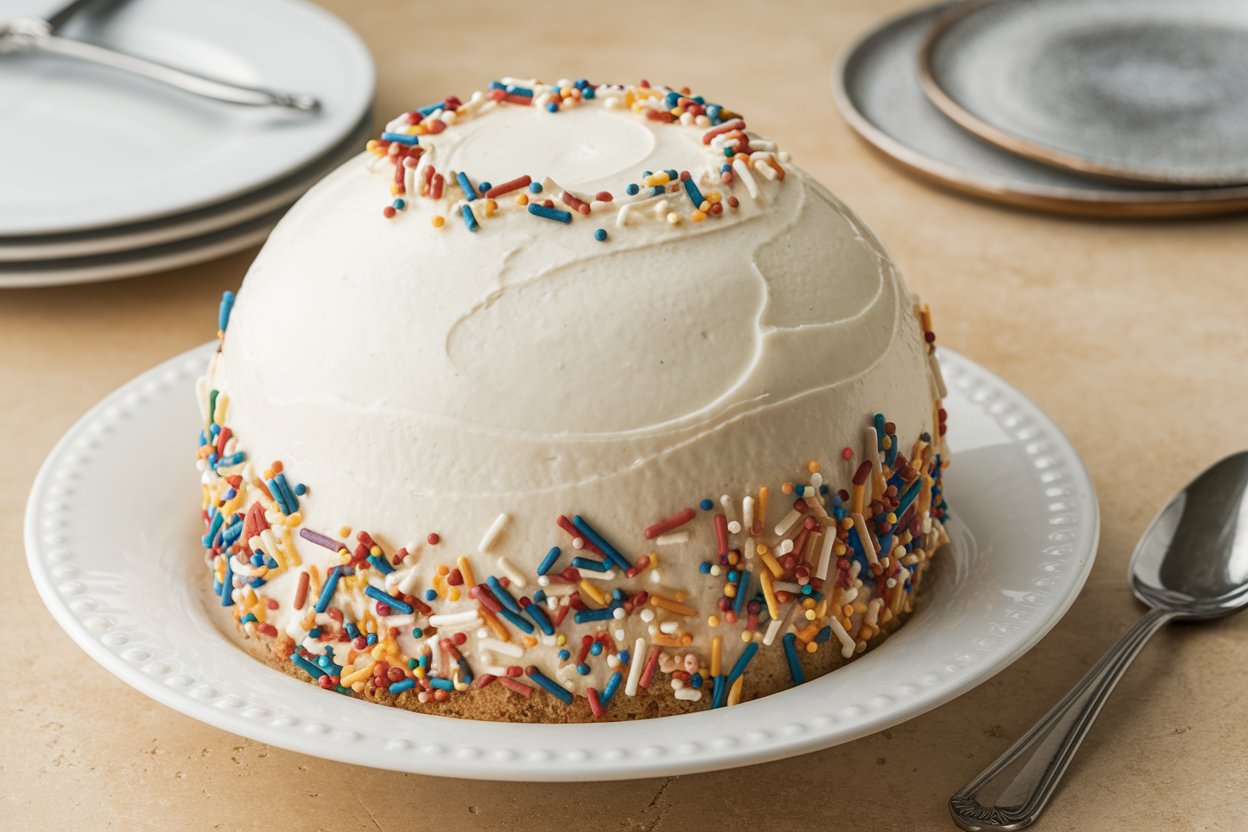
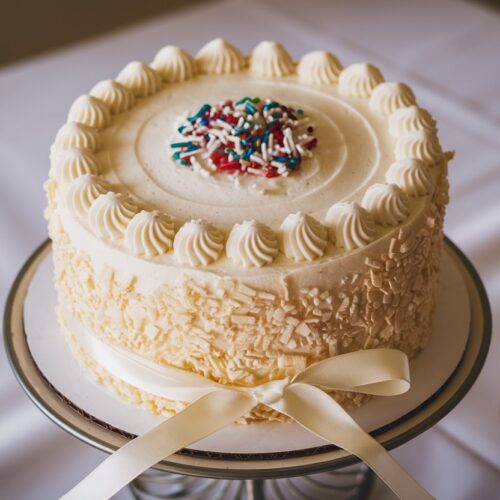
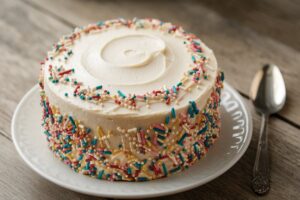
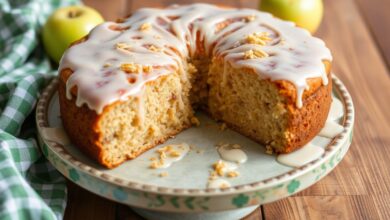
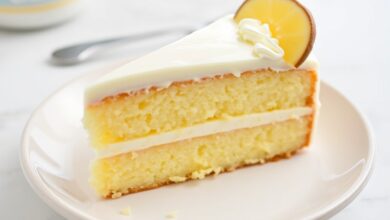
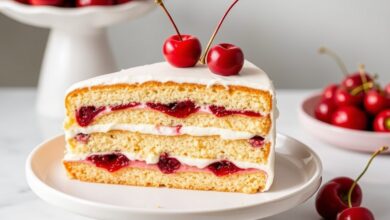
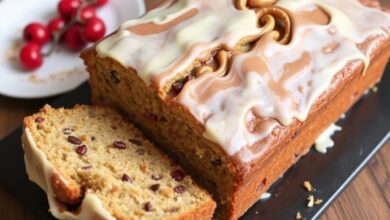
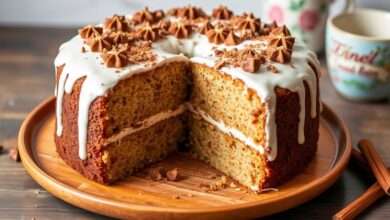
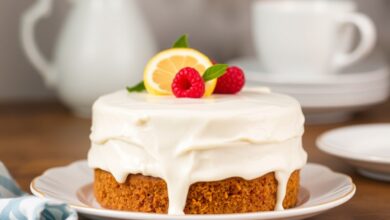
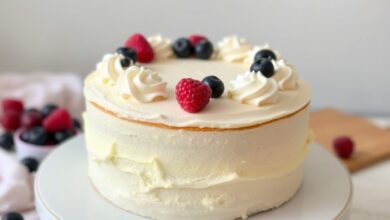
Thank you for your sharing. I am worried that I lack creative ideas. It is your article that makes me full of hope. Thank you. But, I have a question, can you help me?
Thanks for sharing. I read many of your blog posts, cool, your blog is very good.
I don’t think the title of your article matches the content lol. Just kidding, mainly because I had some doubts after reading the article.
Reading this felt like watching the sunrise over a calm sea — filled with quiet awe and deep appreciation.
This piece does more than just convey information; it opens up a space for contemplation and deeper thought.
Your article helped me a lot, is there any more related content? Thanks!
I don’t think the title of your article matches the content lol. Just kidding, mainly because I had some doubts after reading the article.
Thanks for sharing. I read many of your blog posts, cool, your blog is very good.
Your point of view caught my eye and was very interesting. Thanks. I have a question for you.
Your article helped me a lot, is there any more related content? Thanks!
Can you be more specific about the content of your article? After reading it, I still have some doubts. Hope you can help me. https://accounts.binance.com/register?ref=P9L9FQKY
Can you be more specific about the content of your article? After reading it, I still have some doubts. Hope you can help me.
Your article helped me a lot, is there any more related content? Thanks!
Your point of view caught my eye and was very interesting. Thanks. I have a question for you.
I don’t think the title of your article matches the content lol. Just kidding, mainly because I had some doubts after reading the article.
Thanks for sharing. I read many of your blog posts, cool, your blog is very good.
Your article helped me a lot, is there any more related content? Thanks!
Your article helped me a lot, is there any more related content? Thanks!
Thank you for your sharing. I am worried that I lack creative ideas. It is your article that makes me full of hope. Thank you. But, I have a question, can you help me?
Thank you, your article surprised me, there is such an excellent point of view. Thank you for sharing, I learned a lot.
Thank you, your article surprised me, there is such an excellent point of view. Thank you for sharing, I learned a lot. https://accounts.binance.com/it/register-person?ref=JHQQKNKN
Your article helped me a lot, is there any more related content? Thanks! https://www.binance.com/de-CH/join?ref=FIHEGIZ8
Can you be more specific about the content of your article? After reading it, I still have some doubts. Hope you can help me.
Thank you for your sharing. I am worried that I lack creative ideas. It is your article that makes me full of hope. Thank you. But, I have a question, can you help me?
Can you be more specific about the content of your article? After reading it, I still have some doubts. Hope you can help me.
Your article helped me a lot, is there any more related content? Thanks!
Your article helped me a lot, is there any more related content? Thanks!
I’ve been exploring terpene-based products [url=https://terpenewarehouse.com/products/bubblegum-og ]bubblegum strain[/url] recently, and I’m really enjoying the experience. The scents are in the chips, typical, and pleasant. They tot up a discriminative touch to my day after day drill, plateful set the atmosphere and atmosphere. A massive catch sight of for anyone who appreciates pungent wellness tools.
Can you be more specific about the content of your article? After reading it, I still have some doubts. Hope you can help me.
Thank you for your sharing. I am worried that I lack creative ideas. It is your article that makes me full of hope. Thank you. But, I have a question, can you help me?
I’ve been exploring terpene-based products [url=https://terpenewarehouse.com/collections/high-terpene-extract ]hte[/url] recently, and I’m indeed enjoying the experience. The scents are rich, typical, and pleasant. They enlarge a outgoing touch to my always programmed, dollop congeal the mood and atmosphere. A great hit upon for anyone who appreciates pungent wellness tools.
Thanks for sharing. I read many of your blog posts, cool, your blog is very good.
I don’t think the title of your article matches the content lol. Just kidding, mainly because I had some doubts after reading the article. https://accounts.binance.info/en-IN/register?ref=UM6SMJM3
Can you be more specific about the content of your article? After reading it, I still have some doubts. Hope you can help me. https://www.binance.info/kz/register-person?ref=RQUR4BEO